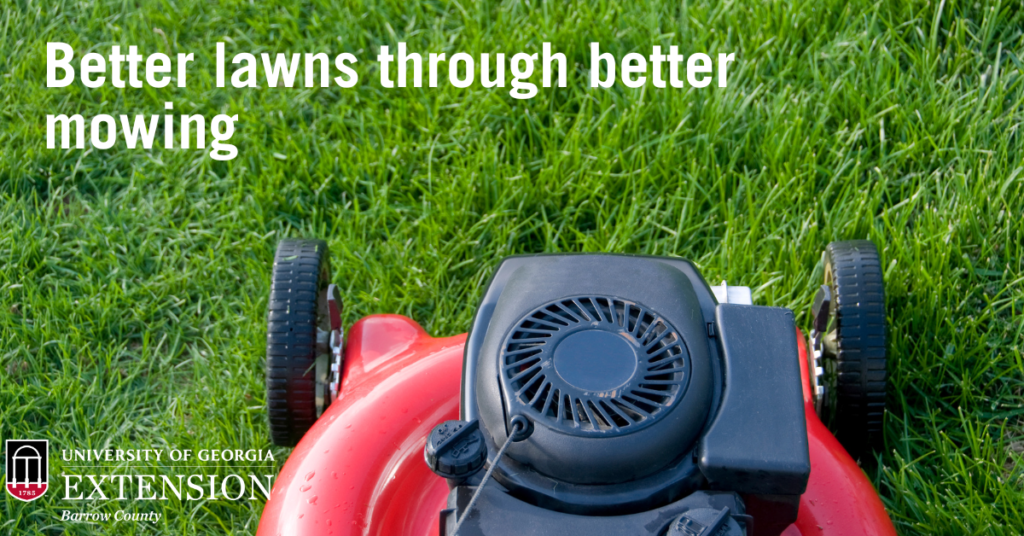Lawns are a quintessential part of American landscapes; from the humblest starter home to the most opulent mansion, lawns for better or worse, are ubiquitous. While many people opt to pay a professional to manage their lawn, having an attractive lawn doesn’t have to be expensive or complicated.
One of the cheapest and simplest ways to improve the appearance of your lawn is through proper mowing practices.

Mow at the right height
First, never remove more than 1/3 of a blade of grass. Removing more than 1/3 stresses the plant, causes browning, and depletes nutrients stored in the roots. I know letting grass get very tall and then cutting it very short sounds like a good way to increase the efficiency of yard chores, but if your goal is a nice lawn, don’t do it. You’ll have a brown yard in the summer when your neighbor’s is lush and green.
Second, know what the recommended cutting height is for your grass species. And before that, maybe that there is a recommended cutting height and that it is different for each grass species. For bermudagrass, the most common in our area, the mowing height recommendation are .5” – 1.5” for hybrid varieties, and 1”-2” for common bermudagrass. In the heat of the summer or when turf might be suffering from drought or other environmental stress, cut on the high end of that range. This year, an abundance of rain and sunshine may mean that grass is growing a lot each week, so it may be nearly impossible to only take 1/3 of the blade grass when mowing at a 1” height. Raise that deck.
Leave grass clippings
Leaving grass clippings to decompose, known as grass-cycling, adds nutrients to the soil can reduce the need for fertilizer by up to 30%. There is no need to rake or bag clippings if you are mowing at the right height and in a timely manner.
Keep the blade sharp
A dull blade doesn’t cut grass, but rather tears it leaving ragged ends. Not only does this affect the overall look of your turf, it also leaves potential for increased insect and disease issues. Taking the blade to get sharpened is an inexpensive but effective way to improve the health of your turf.
Mow in alternating directions
Mow in a different direction each time you cut. If you cut back and forth over the length of you lawn one time, cut back and forth over the width the next, and diagonally the next. This can improve the appearance of your lawn, and prevent odd patterns from forming in the grass over time.
Mow at the right time
Avoid mowing when grass is wet, such as early in the morning when dew is still on the ground. This can lead to an increase in disease, and may cause grass clippings to clump, which can shade grass and cause dead spots if not removed. It is also difficult to get a clean cut on a wet lawn. Mowing in the heat of the day can also be stressful to turf. Mid-morning and late afternoon are ideal times for mowing lawns.
I realize that cutting a dry lawn, and maintaining the recommended height, and not removing more than 1/3 off the top is not the easiest to do right now. We’ve had rain, and more rain, and intense sunshine when it is not raining; which means grass is growing fast(er) and we can’t mow it when we want to. Gardening recommendations are practices to aspire to; you may not always be able to check all of those practices off. But when you do, your lawn will be fantastic. When you don’t or can’t, you’ll know why it’s not.
Check out the warm-season turfgrass calendars to find information on recommended mowing height and other practices specific to your grass species.